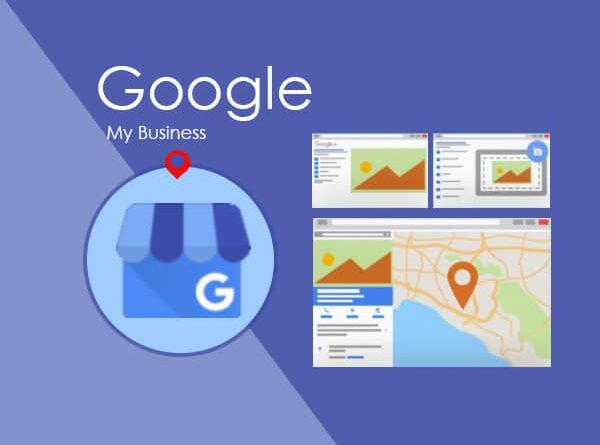Effective Strategies to Promote Your Site on Google
In the present-day digital age, every organization or business has to have an effective online presence in
order to be successful. Knowing that there are hundreds of millions of websites vying for users
attention, it is essential to put measures in place that might increase traffic and visibility. Promoting
your online presence on Google, the most widely used search engine in the world is one of the most
effective approaches to do this. In order to boost the visibility of your website and draw in more people,
we will look at a variety of tactics and recommended practices in this post.
Table of Contents
1. Optimize Your Website for Search Engines
It is essential to optimise your website for search engines if you want to rank better on Google. To find
the terms and phrases your target audience is using to look for pertinent content, start by conducting
extensive keyword research. Include these keywords naturally in all of the material on your website,
including page names, headers, and body text. As these elements contribute to a great experience for
visitors and can raise your site’s search engine rankings, make sure your site incorporates a customer-
friendly layout, simple navigation, and quick-loading pages.
2. Create High-Quality and Engaging Content
Offering worthwhile, educational, and interesting material is essential for drawing in and keeping
visitors since content truly is king. Update your website frequently with new, unique material that
speaks to the wants and desires of your target market. Focus on creating well-researched, authoritative,
and shareable articles, blog posts, films, or infographics. Maintain readability while naturally including
pertinent keywords into your article. In addition to drawing in visitors, high-quality content enhances
the possibility that other websites may link to it, which improves the visibility of your website on Google.
3. Build a Strong Backlink Profile
Backlinks, or links pointing to your website from other websites, play a significant role in Google’s search
algorithm. The visibility of your website on search engine results pages (SERPs) can be considerably
increased by high-quality backlinks from reliable and pertinent websites. Create a link-building approach
that concentrates on gaining genuine and reputable backlinks. This can be accomplished through guest
posting, contacting influencers or subject matter experts, joining online forums, or producing material
that is shareable and generates backlinks to your website.
4. Leverage Social Media Platforms
Platforms on social media are effective tools for advertising your business and increasing visitors.
Establish a significant presence on websites and apps like Facebook, Twitter, Instagram, LinkedIn, and
YouTube that cater to your target market. Share the material from your website frequently on social
platforms, interacting with your followers and inspiring them to share and discuss your pieces. Use
social media advertising as well to broaden your reach and focus on a certain group.
5. Utilize Google Analytics and Webmaster Tools
The performance of your website may be tracked and analyzed using Google Analytics and Google
Search Console, formerly known as Webmaster Tools. To learn more about visitor behavior, traffic
sources, and conversion rates, use Google Analytics. You may use this information to pinpoint areas that
need improvement and adjust your marketing tactics accordingly. With the help of Google Search
Console, you can track indexing, search visibility, and any issues that can have an effect on your site’s
rankings. Google Search Console gives you information about how Google sees your website.
6. Invest in Paid Advertising (Google Ads)
Consider using Google Ads (formerly known as Google AdWords) to bring targeted traffic to your
website in addition to your organic marketing efforts. You may build highly targeted ad campaigns with
Google Ads that show up on search engine result pages or throughout Google’s display network. You
may improve your exposure and draw people who are actively looking for goods or services linked to
your website by placing bids on relevant keywords.
How you can buy direct traffic, promote the site on different screens
You may increase your site’s exposure and get more visitors by utilizing analytical tools, social media,
and leveraging these channels. Your website will be well-positioned for long-term success if you
continually use these methods and adjust to the always changing digital world.
There are many ways to increase website traffic, but one strategy to take into consideration is purchasing website traffic. Learn about What is Social Traffic? (+ How to see it in GA 4). This strategy can effectively increase the number of visitors to your site in a short period of
time. If you are interested in social media traffic generator, the following step-by-step guide will help you
navigate the process:
Guide to how to buy traffic
Step 1: Define your goals.
Outline what you want to accomplish for purchasing website traffic first. Decide what you want to
succeed in, whether its improving brand recognition, promoting sales, or boosting total website traffic.
Step 2: Identify your target audience.
The demographics you intend to attract and the audience you are aiming for should both be made very
clear. Through doing so, you are able to choose the channels of traffic that will bring in the greatest
amount of buyers and ensure that you concentrate on the proper demographic.
Step 3: Research reliable traffic providers.
If you are interested to buy social traffic Conduct thorough research to find reputable traffic providers
that specialize in delivering quality traffic. Consider for vendors who have gotten good feedback,
recommendations, and a track record of bringing in loyal customers.
Step 4: Set a budget.
Set a budget for purchasing website traffic. Think about your willingness to invest and how it fits into
your larger marketing plan. Finding the right balance between earning a profit and attracting quality
traffic is crucial.
Step 5: Select the Right Traffic Source
Select traffic sources that fit your target market and objectives. Identify the channels or platforms most
likely to draw the target audience and drive traffic to your website. Options include banner adverts on
relevant websites, social media advertising, search engine advertising (like Google adverts), and
specialized traffic networks.
Step 6: Define campaign parameters
Define specific requirements for the traffic generated by your advertisement, including length, visitor
are count, geo-targeting, and other pertinent information. In order to guarantee you are obtaining the
results you want, be specific with what you want to accomplish.
Step 7: Monitor and optimize
Once your traffic campaign is live, pay close attention to how it is doing. Track important statistics like
the bounce rate, time spent on the site, and conversions. Utilize this information to fine-tune your
campaign and make changes for better outcomes.
Step 8: Assess traffic quality
Continuously evaluate the quality of the traffic you are receiving. Analyze engagement metrics,
conversion rates, and overall user behavior to ensure traffic is genuine and aligns with your
expectations.
Step 9: Evaluate and refine
Examine often how your paid traffic affects the functionality of your website as a whole. Consider how it
will affect your aims and ambitions. Refine your plan in light of the findings and decide wisely on future
traffic acquisition initiatives.
Step 10: Consider diversifying your focus
Its important to vary your total visitor acquisition strategy if you want to maximize the benefits of
buying website traffic. Consider using extra tactics like search engine optimization (SEO) for organic
optimization, content marketing, and active engagement on social media platforms to develop a full
approach.

